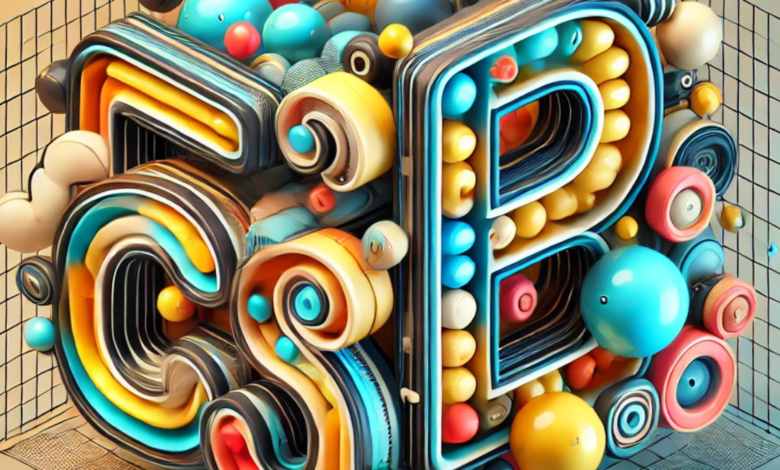The Revolutionary Potential of EJMS in Bubble Latter: Exploring Techniques

Introduction to EJMS in Bubble Lettering
EJMS in Bubble Latter has long been a cornerstone of creative expression, cherished for its playful, bold style that captures attention. Recently, a revolutionary approach known as EJMS in Bubble Latter has emerged, transforming how bubble lettering is executed and perceived. EJMS in Bubble Latter, an acronym for EJMS in Bubble Latter Justified Modular System, introduces a structured yet fluid technique that empowers artists to create stunning designs with precision and flair.
The evolution of EJMS in Bubble Latter has transitioned from hand-drawn simplicity to sophisticated digital artistry. EJMS plays a pivotal role in this journey by integrating modern tools with traditional artistry. Unlike conventional methods, EJMS in Bubble Latter leverages geometric alignment, modular design, and advanced layering to create a harmonious balance between form and function.
This new paradigm is more than just a trend; it represents a shift in artistic methodology. Artists, designers, and brands embrace EJMS in Bubble Latter for its versatility and innovative approach. By understanding its principles and applications, creatives can unlock new dimensions in their work, making EJMS a cornerstone of contemporary visual art.
Understanding EJMS: A Deep Dive
EJMS in Bubble Latter, or Enhanced Justified Modular System, stems from a desire to bring more structure and scalability to the art of bubble lettering. At its core, EJMS in Bubble Latter combines modular design principles with spatial alignment, enabling artists to achieve consistency across their work. This system ensures that every element within the design adheres to predefined rules, creating visually cohesive results.
Unlike traditional bubble lettering, which often relies on freehand techniques, EJMS employs grids, vector-based software, and alignment guides. This approach enhances accuracy and opens up possibilities for scaling designs without compromising quality. Artists can quickly adapt their creations to various mediums, from digital screens to large-scale murals.
Another distinguishing feature of EJMS is its focus on layering and depth. Artists can create three-dimensional effects that elevate the design by incorporating multiple layers and applying gradients or textures. This aspect is particularly valuable in digital applications, where dynamic visuals are paramount.
The benefits of EJMS extend beyond aesthetics. Its systematic approach reduces production time, making it an ideal choice for commercial projects. Whether branding, advertising, or social media campaigns, EJMS offers a reliable framework for delivering stunning visuals that captivate audiences.
Techniques and Best Practices for EJMS in Bubble Lettering
To harness the full potential of EJMS, artists must master a series of techniques that build on its foundational principles. Setting up a workspace tailored to EJMS is the first step. This includes using vector-based design software such as Adobe Illustrator or Procreate, which provide the necessary tools for precision and flexibility.
One of the most critical aspects of EJMS is mastering basic shapes. Bubble lettering relies on circular forms, and EJMS enhances this by introducing modular grids that guide the placement and size of each element. Practising with these grids helps artists achieve proportional consistency, even in complex compositions.
Layering is another cornerstone of EJMS. Artists can create depth by stacking elements and applying gradients to mimic light and shadow. This technique transforms flat designs into dynamic visuals that appear three-dimensional. Additionally, using colour theory to select complementary or contrasting hues enhances the overall impact of the design.
To avoid common pitfalls, artists should focus on precision and planning. Skipping preliminary sketches or neglecting alignment guides can lead to uneven results. By adhering to EJMS’ structured workflow, creatives can produce polished designs efficiently and with minimal errors.
Applications and Real-World Examples of EJMS

The versatility of EJMS makes it a valuable asset across various industries. In modern graphic design, it’s used to create eye-catching logos, posters, and promotional materials. The modular nature of EJMS ensures that designs remain consistent across different formats, whether displayed on billboards or social media platforms.
Advertising and branding are two sectors that have particularly benefited from EJMS. Companies looking to stand out in competitive markets turn to bubble lettering enhanced by EJMS for its playful yet professional appeal. Its ability to convey bold messages while maintaining a polished aesthetic makes it ideal for product packaging, event banners, and more.
Social media campaigns have also embraced EJMS for its dynamic and engaging visuals. Platforms like Instagram and TikTok thrive on content that captures attention quickly, and EJMS designs excel in this environment. By combining vibrant colours, intricate layering, and striking typography, brands can create posts that drive engagement and leave lasting impressions.
Real-world examples further highlight the impact of EJMS. From street artists using it to craft elaborate murals to digital designers creating viral content, EJMS has proven its adaptability. Case studies from renowned design studios showcase how EJMS elevates projects, blending creativity with functionality to meet diverse client needs.
Conclusion: Why EJMS in Bubble Lettering is the Future of Creative Expression
EJMS is more than just a method; it’s a movement redefining the boundaries of bubble lettering. Combining structure with creativity enables artists to push their limits and explore new possibilities. The growing community of EJMS practitioners underscores its relevance, with enthusiasts sharing techniques, tutorials, and inspiration worldwide.
As technology continues to evolve, so too will EJMS. Its compatibility with emerging tools like augmented reality and AI-driven design suggests a promising future. For artists and brands alike, embracing EJMS is an opportunity and a necessity to stay ahead in a visually driven world.
Frequently Asked Questions (FAQs)
Q: What does EJMS stand for, and how does it apply to bubble lettering?
A: EJMS stands for Enhanced Justified Modular System, a structured approach to bubble lettering that ensures consistency, depth, and scalability.
Q: Can beginners learn EJMS, or is it for advanced artists only?
A: EJMS is accessible to beginners with the help of tutorials and practice. Its modular framework simplifies the learning process.
Q: What tools are essential to start with EJMS in bubble lettering?
A: Key tools include vector-based design software, alignment grids, and layering features, as well as traditional sketching tools for initial drafts.
Q: Are there any specific software programs that support EJMS techniques?
A: Adobe Illustrator, Procreate, and similar vector-based software are highly recommended for their precision and flexibility.
Q: How does EJMS enhance traditional bubble lettering styles?
A: EJMS introduces modular design, layering, and alignment principles, creating polished and scalable designs.
You May Also Read: https://topblogbuz.com/spelling-bee-buddy/





